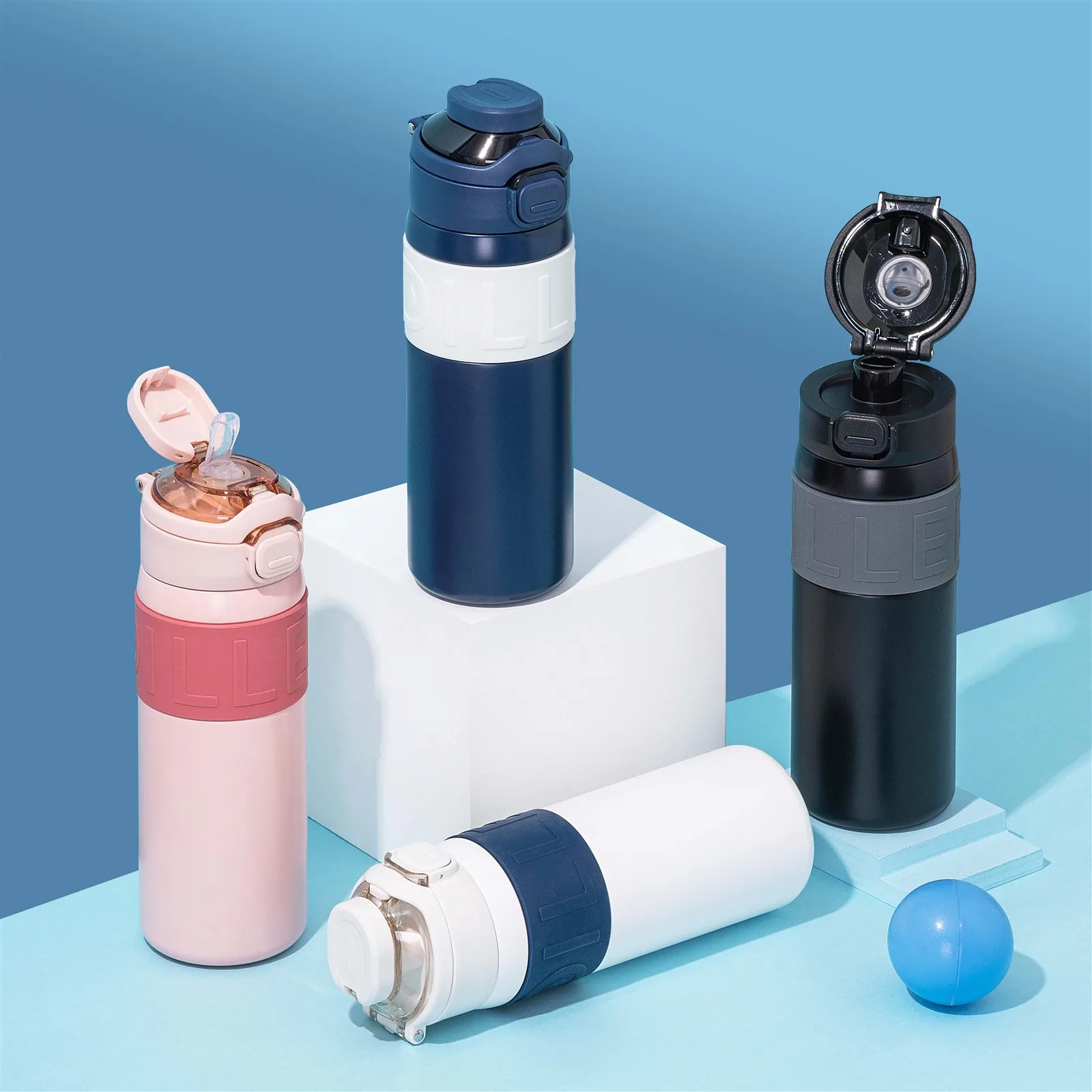Bugün sizlere yalıtımlı bardak, cam bardak ve plastik bardakların bakteri oluşumunu ve sağlığınızı etkilemesini önlemek için nasıl temizleneceğini detaylı bir şekilde anlatacağız.
Yalıtım kabının temizliği için aşağıdaki adımlar takip edilebilir:
1. Çay ve kahve lekeleri: Öncelikle yalıtımlı bardağınızı bir süre ılık suda bekletin, ardından diş macunuyla silerek çıkarın.
2. Tuz lekeleri: Öncelikle yalıtım kabının içini ve dışını ılık suyla durulayın, ardından sofra tuzuna batırılmış bir diş fırçası kullanarak lekeleri fırçalayın.
3. Meyve lekeleri: Meyve lekelerinin çıkarılması nispeten basittir. Bir süre daha tuzlu suda bekletin ve ardından çıkarmak için diş macunu ile fırçalayın.
4. Koku: Yalıtımlı bir bardağa tuzlu su dökün, çalkalayın ve kokuyu gidermek için temiz suyla durulayın.
5. Süt lekeleri ve soya sütü: Termos bardağınızı önce suyla durulayın, ardından yeterli miktarda beyaz sirke dökün, iki kez çalkalayın, ardından yarım saat bekletin ve son olarak suyla durulayın.
6. Suda çözülmesi zor lekeler: Küçük bir fırçaya az miktarda seyreltilmiş asit veya alkali batırın ve yalıtım kabını fırçalayarak lekeleri çıkarın.
7. Günlük temizlik: Yalıtımlı bardağı her gün kullandıktan sonra, koku oluşmaması için zamanında temizlenmelidir.
Cam bardakların temizliği aşağıdaki adımları takip ederek yapılabilir:
1. İç kısmı temizleme: Öncelikle bardağa uygun miktarda ılık su dökün, az miktarda nötr deterjan ekleyin ve kir ve bakterileri temizlemek için iç yüzeyi temiz bir bez veya süngerle silin. Bardakta garip bir koku varsa, suya biraz beyaz sirke ekleyebilir, iyice karıştırabilir, beyaz sirkeyi bir süre ılık suda bekletebilir ve ardından suyla durulayarak temizleyebilirsiniz.
2. Dışını temizleme: Camın dışını temiz suyla ıslatın, az miktarda sabunlu su veya nötr deterjan ekleyin ve yüzeyi temiz bir bez veya süngerle silin. Yüzeyi çizmemek için çok sert bir bez veya sünger kullanmamaya dikkat edin. Ardından deterjanı temiz suyla durulayın ve temiz bir havluyla kurulayın.
3. Kireçleri temizleyin: Cam bardağın içinde kireç varsa, sirke ve su karışımı bardağa dökülüp bir süre bekletilebilir ve ardından temiz suyla durulanabilir. Kireç şiddetliyse, temizlik için limon suyu veya asetik asit çözeltisi kullanılabilir.
4. Dezenfeksiyon ve sterilizasyon: Daha fazla dezenfekte ve sterilizasyon için, cam 5-10 dakika kaynar suda kaynatılabilir veya dezenfeksiyon kabini kullanılarak yüksek sıcaklıkta dezenfeksiyon yapılabilir. Kupanın korozyona uğramaması ve hasar görmemesi için aşırı tahriş edici dezenfektanlar kullanmamaya dikkat edin.
Kısacası, cam bardakları temizlerken nazik deterjanlar ve aletler kullanmak, bardaklara zarar vermemek için keskin nesneler ve güçlü tahriş edici maddeler kullanmaktan kaçınmak önemlidir. Aynı zamanda, bakteri oluşumunu önlemek için bardağı kuru ve hijyenik tutmak önemlidir.
Plastik bardakların temizliği şu adımları takip ederek yapılabilir:
1. İç temizlik: Öncelikle plastik bardağa uygun miktarda ılık su dökün, az miktarda nötr deterjan ekleyin ve kir ve bakterileri temizlemek için iç yüzeyi temiz bir bez veya süngerle silin. Bardakta garip bir koku varsa suya biraz beyaz sirke ekleyebilir, iyice karıştırabilir, beyaz sirkeyi bir süre ılık suda bekletebilir ve ardından suyla durulayarak temizleyebilirsiniz.
2. Dış temizlik: Plastik bardağın dışını temiz suyla ıslatın, az miktarda sabunlu su veya nötr deterjan ekleyin ve yüzeyi temiz bir bez veya süngerle silin. Yüzeyi çizmemek için çok sert bir bez veya sünger kullanmamaya dikkat edin. Ardından deterjanı temiz suyla durulayın ve temiz bir havluyla kurulayın.
3. Çay lekelerini çıkarın: Plastik bardağın içinde çay lekeleri varsa, sirke ve su karışımı bir solüsyonu bardağa dökülerek bir süre bekletilebilir ve ardından temiz suyla durulanabilir. Çay lekeleri şiddetliyse, temizlik için limon suyu veya asetik asit solüsyonu kullanılabilir.
4. Su sıcaklığına dikkat edin: Tritan plastik bardakları temizlerken aşırı sıcak su kullanmaktan kaçının. Bu, bardakların deforme olmasını veya çatlamasını, korozyona uğramasını ve zarar görmesini önler.
Plastik bardak kullanırken, bardakların aşınmasını ve hasar görmesini önlemek için aşırı tahriş edici temizlik maddeleri ve dezenfektanlar kullanmaktan kaçınılmalıdır. Aynı zamanda, yüzeyi çizmemek için keskin nesneler veya güçlü sürtünmeli temizlik aletleri kullanılmamalıdır. Bakteri oluşumunu önlemek için temizlikten sonra bardak kurutulmalıdır.
Özetle, fincanın türü ne olursa olsun, temizlik için hafif deterjan ve yumuşak temizlik araçları kullanılmalı, aşırı tahriş edici temizlik maddeleri ve güçlü sürtünmeli temizlik araçlarının kullanımından kaçınılmalıdır. Aynı zamanda, bakteri oluşumunu önlemek için fincanın kuru ve hijyenik tutulması önemlidir.




